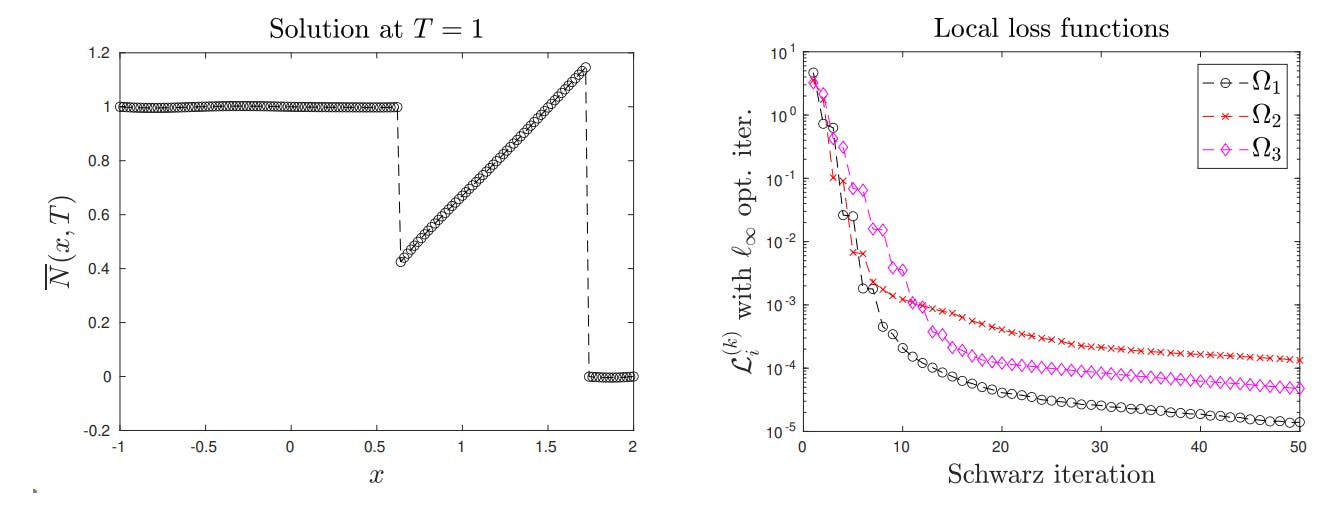By Noon van der Silk, Software Engineering Lead for Hydra, a Layer 2 scalability solution built by Input Output (IO)
Scalability is the Achilles’ heel of Web3. While blockchain networks promise decentralization, security, and transparency, they often struggle with one foundational problem: throughput. As users grow and applications become more complex, blockchains face mounting pressure to deliver faster, cheaper, and more efficient transactions without compromising on core principles.
Most Layer 1 (L1) chains simply can’t scale on their own to meet mainstream demand. That’s why Layer 2 (L2) solutions like Hydra are so important. Not only does this protocol stand out for its performance, but also for its practical, deployable design, helping to address the real-world needs of developers and infrastructure providers.
The Problem: Scaling Without Sacrificing Principles
Scaling a blockchain isn’t just about processing more transactions per second. It’s about doing so in a way that preserves decentralization and security, maintains trust, and delivers predictable user experience. Many scaling approaches attempt to shortcut this by introducing centralized validators, proprietary technologies, or incompatible scripting environments.
Hydra approaches the problem differently. It is built as an isomorphic extension of Cardano, meaning it shares the same ledger rules and scripting logic as the L1. This not only preserves consistency and security, but also eliminates the steep learning curve or redeployment challenges developers often face with other L2 systems.
Hydra’s architecture directly tackles three of the most persistent challenges in Web3:
- Latency: Block confirmation times and network congestion slow down interactions on-chain.
- Cost: As demand spikes, so do transaction fees.
- Throughput: Layer 1 protocols are limited by block size and time—meaning only so many transactions can be processed per second.
What Is Hydra?
Hydra is a L2 protocol designed to increase throughput and reduce transaction latency by moving most operations off-chain into a state channel. Rather than burdening the L1 with every individual transaction, Hydra provides scaling by deploying ledgers known as Hydra Heads to manage transactions. Each Head consists of a small group of participants who process and validate transactions between themselves, only committing the final agreed-upon state back to Cardano.
This model enables high-speed, low-cost interactions while preserving the trust guarantees of the underlying blockchain. Because the final output is committed to the Cardano L1, users still benefit from the network’s robust security and auditability—without paying the performance penalty.
Why Hydra Is Practical for Today’s Developers
Where Hydra distinguishes itself is in practical implementation. Unlike many theoretical or highly specialized scaling solutions, Hydra is purpose-built for usability, real-world performance, and deployment agility.
Here’s what makes it stand out:
1. Isomorphism: One Language, One Model
Hydra is isomorphic to Cardano. That means it uses the same ledger logic, validation rules, and scripting environment as Cardano. Developers don’t need to learn new programming languages, adapt to custom tooling, or rethink their entire architecture to build on Hydra. They simply deploy their Dapp using their existing tools.
This makes Hydra highly attractive to development teams who are already invested in Cardano’s ecosystem and want to scale without friction.
2. High Throughput with Finality
Transactions within a Hydra Head are validated and finalized in real time, with only the final state settlement submitted to L1. This structure allows for support of thousands of transactions per second (orders of magnitude faster than existing L1s), near-instant confirmation times and reuse of secure and deterministic transaction logic.
3. Decentralization Without Complexity
Hydra maintains decentralization by allowing multiple independent parties to operate a Hydra Head. However, it avoids the pitfalls of excessive validator counts by keeping the group of Head participants small—typically 3 to 5 nodes. This strikes a careful balance:
- Small enough to allow rapid consensus
- Large enough to prevent central points of control
Because Hydra requires unanimous agreement among participants before committing state, it also ensures integrity and trust.
4. Composable and Modular
Each Hydra Head functions as an independent environment, enabling parallel processing of transactions across multiple Heads. Developers can structure their applications modularly, spinning up new Heads for specific user groups, high-load functions, or isolated components.
This allows applications to scale horizontally, adapting to load dynamically and avoiding the bottlenecks associated with single-chain throughput limits.
5. Cost-Efficiency
By conducting the majority of interactions in an L2 and batching settlement, Hydra dramatically reduces the number of on-chain transactions required. This results in significantly lower fees per user interaction—essential for applications like gaming, DeFi, and enterprise processes.
For businesses and developers seeking predictable cost structures at scale, Hydra offers a clear advantage.
Built-In Resilience: Designed for the Real World
Scalability means little without reliability. Hydra is engineered with redundancy and fault-tolerance at its core.
If a node within a Hydra Head fails, the system doesn’t crash. Incoming transactions are queued, and the Head resumes normal operation once the issue is resolved. If a node drops permanently, it can be replaced with a hot standby, ensuring continuous operation without end-user disruption.
This makes Hydra not only scalable but also resilient—capable of sustaining high loads and maintaining uptime under pressure.
Hydra vs Other L2 Solutions
What makes Hydra particularly compelling compared to other L2s is its pragmatism. It doesn’t require experimental consensus models or rely on centralized sequencers. There’s no need for complex bridges or reliance on completely separate virtual machines. Instead, Hydra offers:
- Direct compatibility with existing Cardano smart contracts
- Native integration with Cardano wallets and infrastructure
- Clear separation of L2 execution and L1 settlement
- Full auditability, with only final outcomes recorded on-chain
Where some L2s promise performance by sacrificing decentralization or security assumptions, Hydra keeps the trilogy of blockchain integrity—scalability, security, and decentralization—intact.
Real Utility, Not Just Hype
Hydra is not a theoretical roadmap. It is live, evolving, and engineered for deployment. With each version, Hydra is being optimized to support new features like memory bounding, dynamic deposit checking, and head-status monitoring. These aren’t abstract additions—they’re driven by the needs of developers pushing Hydra into production environments.
This ongoing development signals a key distinction: Hydra is a solution being refined through use, not speculation. It has moved past whitepapers and become reality. Hydra is also open-source, giving developers the freedom to use and modify code, collaborate with a global community, and build faster with transparent, secure, and reusable tools.
The Future of Hydra
Looking ahead, Hydra opens up new architectural possibilities for Web3:
- State channels for financial applications
- Private Hydra Heads for enterprise use
- Off-chain compute layers for data-heavy applications
- Composable microservices that interact asynchronously across Heads
As the Cardano ecosystem grows, so too will the potential of Hydra to serve as the backbone for scalable, production-ready applications. And because Hydra scales with the network—via additional Heads or optimized consensus parameters—it is positioned to support Web3’s expansion well into the future.
Conclusion: Why Hydra Stands Apart
In a crowded space of scaling solutions, Hydra offers something rare: a practical, secure, and fully deployable L2 protocol that works today. It solves the scalability trilemma not by compromising, but by refining what already works.
- Developers gain performance without abandoning their tools.
- Networks gain throughput without destabilizing consensus.
- Users gain speed, and cost-efficiency without added complexity.
Hydra isn’t just another entry in the L2 race. It’s the standard-bearer for scalable, interoperable, and resilient infrastructure in Web3. And that’s what makes it the most practical scaling solution on the market.
====================================================================
Noon van der Silk is the Software Engineering Lead for Hydra, a Layer 2 scalability solution built by Input Output (IO) for the Cardano blockchain. It boosts transaction speed and throughput by enabling off-chain processing through “Hydra heads”- independent, isomorphic state channels that allow multiple participants to transact in parallel. By running transactions across these mini ledgers, Hydra significantly increases network capacity while preserving Cardano’s core principles of security and decentralization.
Charles Hoskinson at Rare Evo 2025
Charles Hoskinson, is the founder of Input Output (IO), the engineering firm behind Cardano and co-founder of Ethereum. As one of the industry’s most influential visionaries, Charles continues to lead conversations around decentralised governance, scalability, and the real-world applications of Web3. He is at Rare Evo 2025 to share his insights on the future of blockchain technology.
About Rare Evo
Rare Evo is a blockchain conference focused on interoperability and the convergence of traditional industries with Web3 technology. It brings together a wide range of blockchain projects, communities, leaders, investors, and enthusiasts for networking, education, and celebration. The event aims to provide a hybrid experience that integrates the best aspects of global blockchain gatherings into a single, annual convention.










